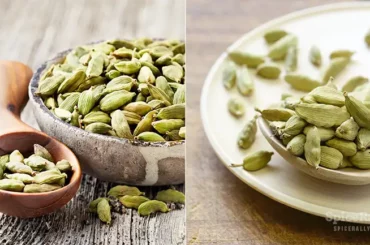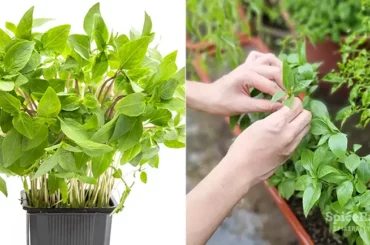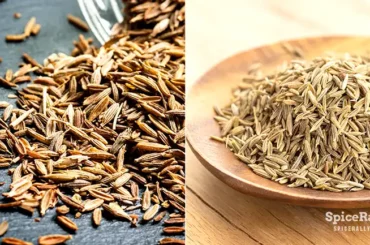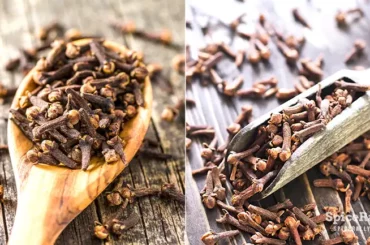We bet that all of us have black pepper as a staple spice. So, what do you think about having your own cultivation? On that note, let’s share a complete guide on how to grow black pepper at home.
Black pepper is an understorey plant that mounts up trees and grows in mottled light. This plant typically requires well-drained loamy soils rich in organic matter. You can grow this outside or as a houseplant if you provide enough sunlight and space. Black pepper can be produced from seeds, and it takes around three to four years for the plant to yield.
Use the instructions we share in this episode for successful, great black pepper cultivation.
How To Grow Black Pepper At Home?
Black pepper is probably the most ubiquitous culinary ingredient we regularly incorporate with our food. We usually use grown black pepper or whole black peppercorns extensively at home, where we also spend a lot to buy them separately.

While it adds an incredible zest to our plates, black pepper also contains anti-inflammatory properties and antioxidants that can reduce inflammation and lower cholesterol levels. It is also an excellent ingredient that can also boost metabolism and enhance digestion. Growing black pepper can offer you many benefits, and it is not a difficult task if you’re ready to invest some time and effort.
All you need is enough space, great humidity, enough sunlight, and well-drained, loamy soil rich in organic matter. Black pepper can be grown outdoors in the USDA hardiness zone 12.
But they will stop growing when temperatures drop 65 degrees Fahrenheit (18C) below and do not tolerate frost. In such instances, they make great houseplants when located in full sun with 50 percent or greater humidity or greenhouse if your area is not warm enough.
Plant Description
Black Pepper (Piper nigrum) is a tropical vine, and this spice may also be referred to as Madagascar pepper or pepper. It grows well under the bright but indirect sun with moderate watering. Black Pepper vines grow to between 15 and 30 feet long, but generous amounts of peppercorns can be grown on smaller vines in 8 to 10-inch pots.
Black pepper plants give better results when grown on a trellis or a pole, and the vines can also cover a fence or shade on an overhead bower. They have beautiful, deep green leaves, and the fruit hangs on extended stems. Each stem is enclosed by about fifty berries that go from green to red, then dark maroon, and finally black when dried.
These plants are self-fertile, so only one plant is required to blossom and produce peppercorns. This perennial plant can exist for over 30 years, with a commercial lifespan of 12–20 years. The plants need an annual rainfall of about 2000 mm and will demand extra irrigation in drier regions. Black pepper can be propagated from dry seeds.
Or else, as is most familiar for commercial production, from cuttings or stolons of specified plants. The secondary runners of the plant usually accept cuttings and should include one or two leaves.
Growing Black Pepper Indoors
Fill the pot you chose with soil and sow your black pepper seeds 1⁄4 inch below the surface (select a pot that is at least 8 inches). Scatter the seeds apart so they are 3 inches away from each other. Make sure to water the seeds immediately after planting them. And it is crucial to provide at least 6 hours of direct sunlight per day (some afternoon shade is ideal if possible).
Locate the pot to get exposure from a West or East-facing window. When daylight hours are restrained, you could increase light using an LED growing light. It is important to remember that growing peppercorns in containers demands you to keep the soil constantly damp, not soggy. Thus, water when the soil’s surface seems dry.
You can water until the wetness runs through the pot’s drainage holes. Keep temperatures around 70 degrees Fahrenheit (21 Celsius) during the day. And avoid temperatures below 60 degrees Fahrenheit (15.5 C) as it hinders growth. A humidity level of approximately 50 percent is perfect, and you can augment low humidity with a pebble tray or a humidifier.
Tip: If possible, water your plant early in the day.
Growing Black Pepper Outdoors
You can plant the seeds the same as mentioned above in trays or containers and keep them indoors for about 30 days before moving them outside. It is best to transplant your immature plants in the spring when the soil is temperate, and all risk of frost has gone. Transplant in a location that gets maximum sun, preferably with afternoon shade during the hottest portion of the day.
Soil Requirement
This plant prefers soil with adequate drainage. A loamy combination rich in organic matter is perfect, and peppercorns can be needy regarding nutrition and water necessities. Therefore, having a soil blend that remains evenly damp but not waterlogged is key to developing a healthy plant.
Supplementary organic matter, like compost, will help maintain moisture if you have problems drying out too fast. This is not a plant that can endure poor soil conditions. Black pepper plants also demand a slightly acidic soil mixture with a pH range between 5.5-6.5.
Water Requirement
As mentioned above, black pepper plants require moist soil and thrive best when watered multiple times weekly. In hotter conditions, you may need to water your plant more frequently. Stick a finger in the soil to monitor its moisture level so that you can water your plant if the soil feels dry.
Important – Quick and gradual wilt is the most expected pepper plant disease, and it can advance to root rot when left untreated. Plunge your finger into the soil whenever you water your plant. If the soil feels saturated or water pools into the hole your finger leaves, avoid watering your plant. Watch for indications of overwatering, like yellow or brown leaves, withered vines, moldy roots, or lesions on the plant.
Applying Fertilizer
Using a fertilizer twice a month can retain the strength and health of your black pepper plant. You can go for an organic fertilizer from the store or assemble your own compost to provide your plant with additional nutrients.
Distribute the fertilizer around and in the soil using the hand or tiller. This way, your pepper plant can absorb the nutrients effectively. The amount of fertilizer you apply depends on its potency. Thus, read the instructions as you use your fertilizer to decide how much your black pepper plant requires.
Tip – Black pepper plants react particularly well to liquid fertilizers.
Mulching
Pepper plants have a facile root system and absorb organic nutrients well. Therefore, mulching your plant every 6 to 8 months can maintain the soil moisture and lower temperature instabilities during the day and night. Organic mulches made of leaves, grass clippings, or manures respond well to pepper plants. Plant your mulch at least 2–4 inches below the ground, so your plant roots can more comprehensively soak it.
Pest Control and Spraying Insecticides
If you notice jagged, irregular holes nibbled into the leaves of your black pepper, you may have a flea beetle threat. These insects can destroy vegetation if the infestation is left uncontrolled. Tachinid flies, and particular parasitic wasps are the natural predators of this beetle.
And in a well-balanced ecosystem, they typically show up soon after the beetles to feast on them. If our intervention is needed, they can be handled by applying neem oil.
Moreover, they can also be prevented by intercropping with mint and thyme, as the powerful scents of these plants repel these beetles. Any other pests could also be controlled with these non-toxic insecticides.
Fertilizing
Peppercorns are considered delicate feeders. In the spring, they can be supplied with fertilizer for flowering plants, and they can also be fertilized this way every two weeks during the summer.
This will facilitate the production of the flowers, which then transform into the peppercorn itself as it withers and grows black. Although they resemble a small berry, peppercorns are considered a drupe more closely described as stone fruit. Fertilizing is not essential during the fall and winter months.
Pruning Your Black Pepper Plants
This perennial flowering vine can extend up to 30 ft long if left uncontrolled. However, usually, gardeners prefer pruning this plant. Accordingly, it’s best to prune about six months into the growing season as the flowers start to form.
In spots where this plant is grown in a perennial garden, it can also be pruned back drastically in the winter, and it will move out new growth in the spring. As routine plant maintenance, prune away any damaged, diseased, or dead leaves throughout the season.
Harvesting
When your plants are kept well-checked and fertilized, they will start yielding after about three to four years of growth. These fruits will begin green, blushes to turn red, and finally, they will develop black after they are picked and left to dry.
White peppercorns are the inner part of mature dried fruits. Generally, black pepper is left to saturate in water for days at a time, and then the outer peel is removed to expose the white pepper. Green peppercorns are immature fruits that taste more citrusy and earthy than when left to mature.
They can be harvested immaturely, dried, and also delivered as green pepper. Once you have gathered your peppercorns, prune back the spent points to promote more flower production. Dry your peppercorns in the sun for seven to nine days.
Spread them out on a flat surface, like a baking sheet, where they can receive direct sunlight. Keep your peppercorns drying outside until the outer skin winches, turns black, and creates a hard and dry texture.
Storing Harvested Black Pepper
After harvesting, the peppercorns must be immediately blanched in boiling water to clean the surface before drying. Once the peppercorns are thoroughly dried, they can be stored. If you want to preserve your seeds for future plantings, skip this blanching method. This will neuter the seeds and will not produce more pepper plants.
Whole peppercorns keep their flavor the longest, so storing them this way will stretch your precious harvest. Grinding pepper should be done just before you decide to use it. Pre-ground black pepper starts to lose its flavor at about four months because of its high surface area and increased vulnerability to sunlight, oxygen, and moisture. It can even take on a bitter taste.
Store your harvested whole peppercorns in a well-sealed container away from direct sunlight, such as in your pantry. If you have harvested fresh green peppercorns and prefer pickling them, they will last for one month after opening and must be stored in the refrigerator.
Summing Up
As you see, growing black pepper in your home garden or as a houseplant is not challenging when you know the conditions this plant requires. No matter what you grow in your garden, it is essential to have patience and care for the plants throughout the growth process. So, we hope our guide was helpful enough for you to have successful black pepper cultivation while enjoying your gardening hobby!
Related Topics
- How To Grow Cumin At Home? (A Comprehensive Guide To Have Your Own Cultivation)
- An Informative Guide On How To Grow Cloves At Home
- How To Grow Vanilla- A Comprehensive Guide To Have Your Own Cultivation




